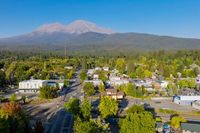In California, the promise of security through insurance is increasingly coming under fire—both literally and figuratively. From Tesla’s ambitious, tech-fueled foray into auto coverage now mired in regulatory trouble, to rural homeowners like Donna Ault in Siskiyou County struggling to keep even basic fire insurance, the state’s insurance landscape is facing unprecedented scrutiny and upheaval.
On October 3, 2025, the California Department of Insurance (CDI) made headlines when it announced enforcement actions against Tesla Insurance Services, Tesla Insurance Company, and State National Insurance Company. The allegations? Incompetency, untrustworthiness, and misconduct in claims handling. According to legal documents filed by the CDI, concerns have been mounting since August 2022, when a spike in complaints about State National policies caught regulators’ attention. Tesla Insurance Services, acting as State National’s general agent since 2019, had agreed to handle all aspects of private passenger auto policies—but, as the complaints piled up, it became clear something was amiss.
Consumers reported being unable to reach Tesla Insurance Services to file or follow up on claims and facing significant delays in claim resolutions. The CDI’s filings highlighted not only the communication breakdown but also a troubling lack of leadership: between April 2023 and May 2025, the Head of Claims position at Tesla Insurance Services changed hands three times, yet complaints soared despite efforts to ramp up staffing.
The situation worsened after Tesla Insurance Holdings acquired Balboa Insurance Company in early 2022, rebranding it as Tesla Insurance Company and appointing Tesla Insurance Services as its agent in late 2024. The move meant more policies—and, inevitably, more claims. Yet, according to the CDI, even increased staffing couldn’t keep pace. "In 2025, the Tesla Companies have already had more complaints, more justified complaints, and committed more violations than in the three previous years combined," the CDI reported. The numbers are staggering: in 2022, Tesla Insurance Services faced 83 complaints and 26 regulatory violations; by 2025, those figures had ballooned to 1,481 complaints and 1,969 violations.
Across the period from 2022 through late September 2025, the CDI cited over 2,900 code violations for Tesla Insurance Services, more than 2,500 for State National, and 561 for Tesla Insurance Company. The most common infraction—making up 60-70% of cases—was failing to respond to claimant inquiries within 15 days. Other violations included misrepresenting policy details, failing to acknowledge communications, and dragging out investigations. The CDI’s filings described these patterns as so frequent that they constituted a general business practice of unfair claims processing.
The stakes are high. The companies now face potential penalties of up to $5,000 per unlawful act, or $10,000 if the act is deemed willful. They have 15 days from the October 3 notice to respond; if the issues aren’t resolved, an administrative law judge will decide whether they can continue doing insurance business in California. The threat is real: under state law, licenses can be revoked if a company is found incompetent or untrustworthy, or if it exposes the public to loss.
Adding to Tesla’s woes, a proposed class action lawsuit was filed in July 2025 in Los Angeles Superior Court. The suit, brought by Carlos Magana on behalf of policyholders with comprehensive and collision coverage, alleges a pattern of unjustified delays, failures to investigate, and even outright non-payment of claims. Magana’s own ordeal, involving a stolen leased van and months of fruitless communication with adjusters, is emblematic: "As a result of the Tesla Defendants’ conduct, Plaintiff has suffered economic damages due to the loss of policy benefits, consequential economic losses...and noneconomic and general damages for emotional distress," the lawsuit claims.
This regulatory and legal storm stands in stark contrast to the vision Tesla CEO Elon Musk outlined in early 2022. Musk boasted that real-time driving data would enable "super-fast" claims handling and same-day repairs, promising, "We’re trying to turn a nightmare into a dream with Tesla Insurance." Yet, as Carrier Management reported, California’s strict insurance rules prevent the use of real-time driving behavior to set premiums, and the dream has yet to materialize for many policyholders in the state.
While urban drivers wrestle with Tesla’s insurance headaches, rural Californians face a different, but equally daunting, insurance crisis. In Siskiyou County, Mount Shasta resident Donna Ault’s story is all too familiar. On December 26, 2023, Ault received a notice from the California FAIR Plan—California’s "insurance of last resort"—warning her to replace her roof and clear debris, or risk policy suspension in 60 days. She didn’t make the repairs, nor did she respond, but soon received a renewal notice. Months later, another letter demanded proof of roof repairs within 30 days or else a surcharge and loss of replacement coverage would follow. Ault, who argued there were no leaks and no need for a new roof, appealed but never heard back. Her coverage continued, but the ordeal left her questioning whether the threats were genuine or simply a tactic to force costly upgrades.
The FAIR Plan, as its spokesperson Hilary McLean explained to SFGATE, is not meant to compete with regular insurers but to provide basic fire coverage when no one else will. Yet, the number of FAIR Plan policies in Siskiyou County skyrocketed by 81% between September 2023 and September 2024, reflecting a broader exodus of insurers from California’s high-risk zones. Rural residents, already grappling with soaring premiums, sometimes simply forgo insurance. "It becomes very cost-prohibitive for people to live in the rural sectors of California," said forester Kevin Boston, who noted that the state’s wildfire crisis is decades in the making. "We need to spend a lot of money to treat the lands we have ignored for almost 30 years, getting them back to a place where they are more resistant to these large, catastrophic fires."
For business owners like Debra Anderson and Darlene Mathis in McCloud, the realities are even starker. Anderson’s historic guest house, surrounded by green lawns and equipped with fire hydrants, was still classified as high-risk, forcing her onto the FAIR Plan after her insurer dropped her. Mathis, who owns several properties, saw her premiums skyrocket from $17,000 to $72,000 before finding a slightly more affordable option. "It is crazy when you are paying more for your insurance than you are for your mortgage," Mathis lamented. The burden, Boston observed, "comes right out of their quality of living index."
State regulators are not standing still. Under the 2022 Safer from Wildfires initiative, insurers must offer discounts to homeowners who take steps to "harden" their homes against fire. The CDI is also working on a public catastrophe model to make risk calculations more transparent and to require insurers to write more policies in wildfire-prone areas. Still, for many, the sense of crisis remains acute. "There has to be a solution, or else these communities will not survive," Mathis warned.
From Silicon Valley to the forests of Siskiyou, California’s insurance system is at a crossroads. Whether through regulatory reform, industry innovation, or sheer resilience, the state’s residents are hoping for a future where insurance is less a source of anxiety—and more the safety net it was meant to be.




